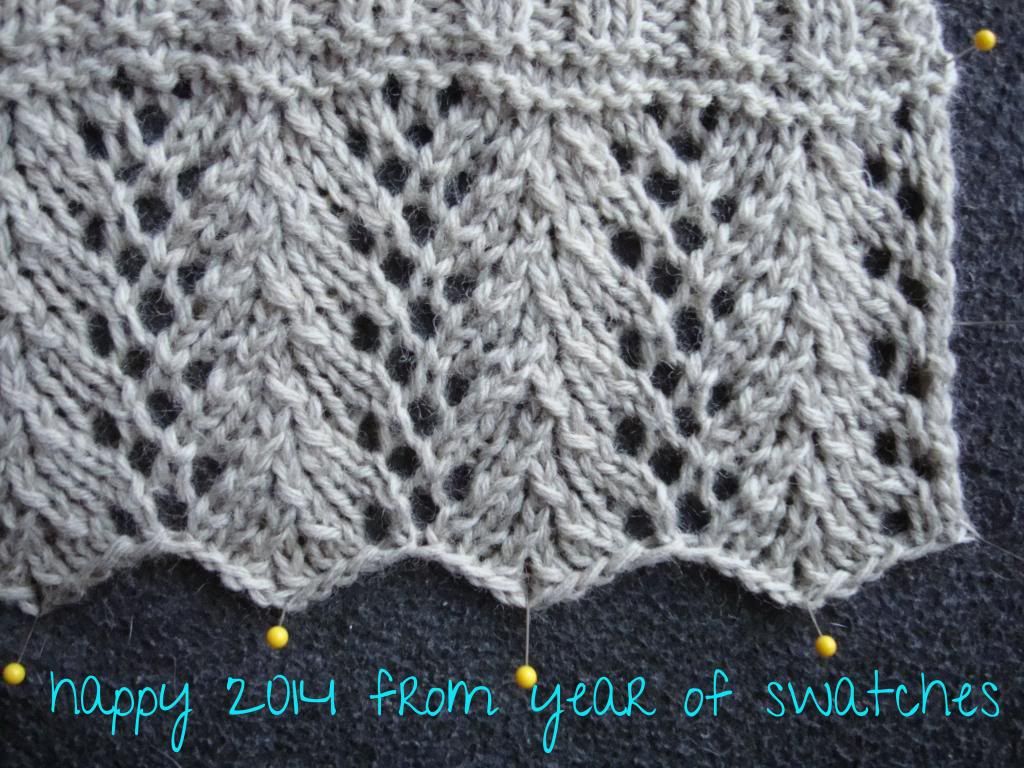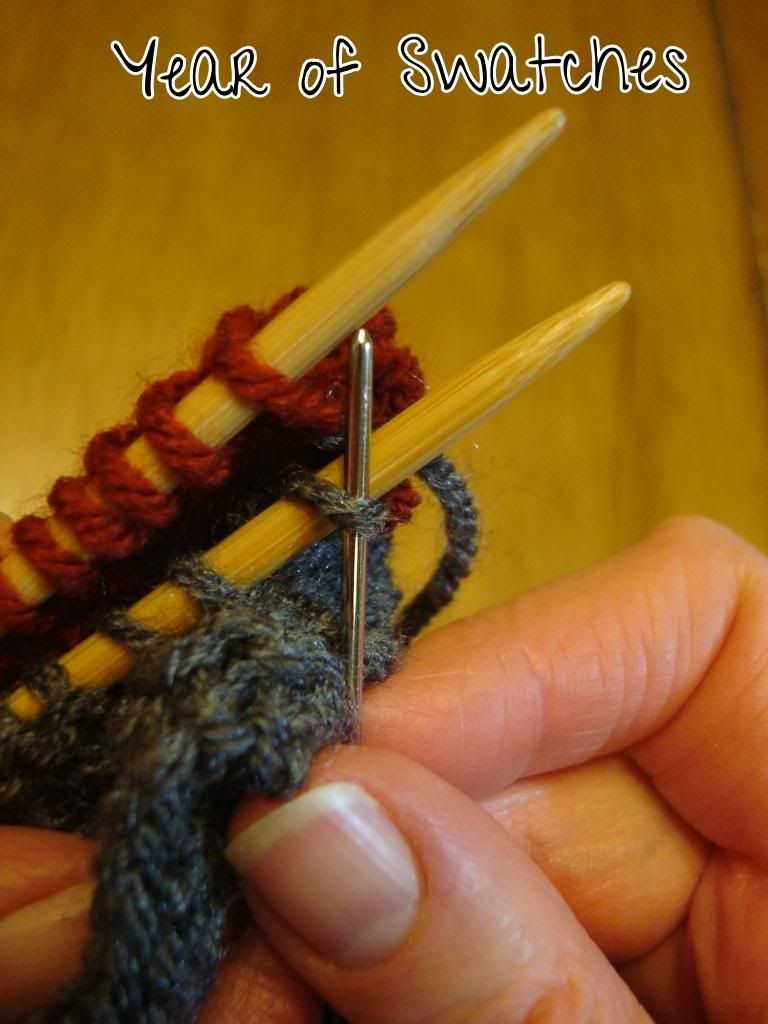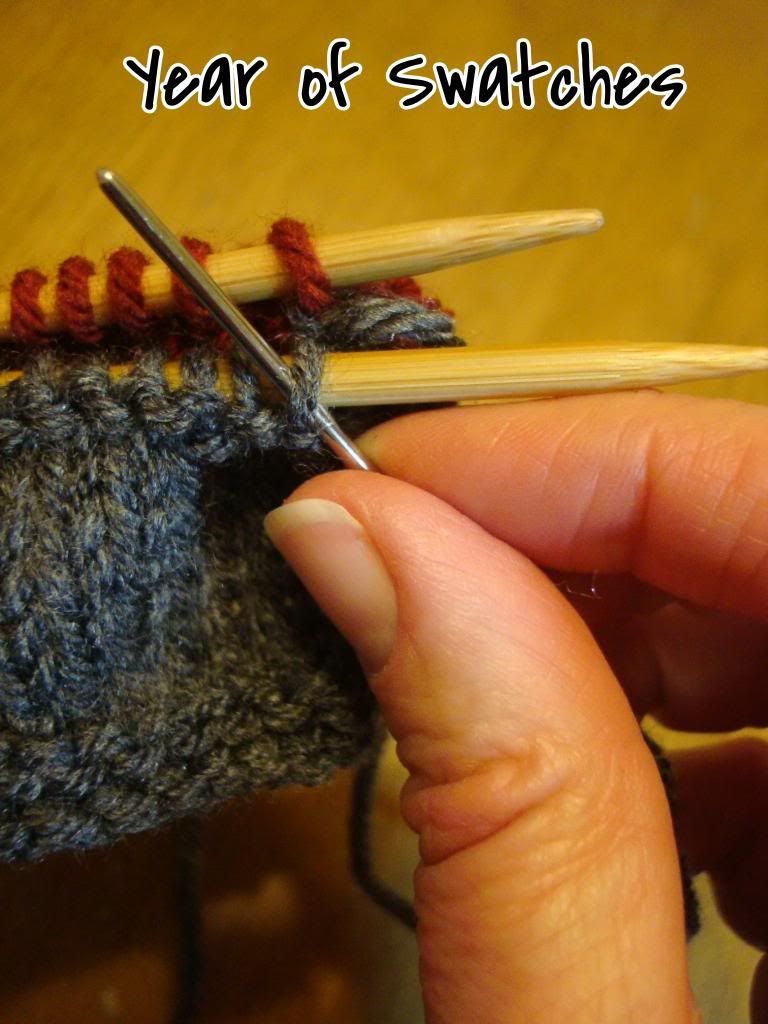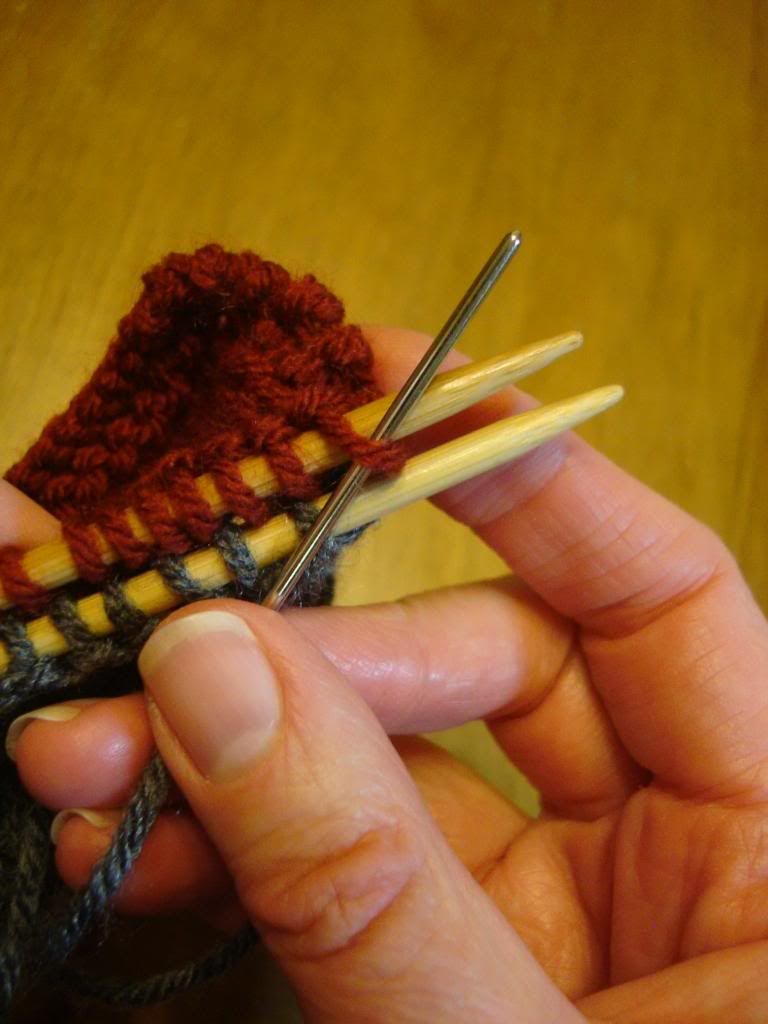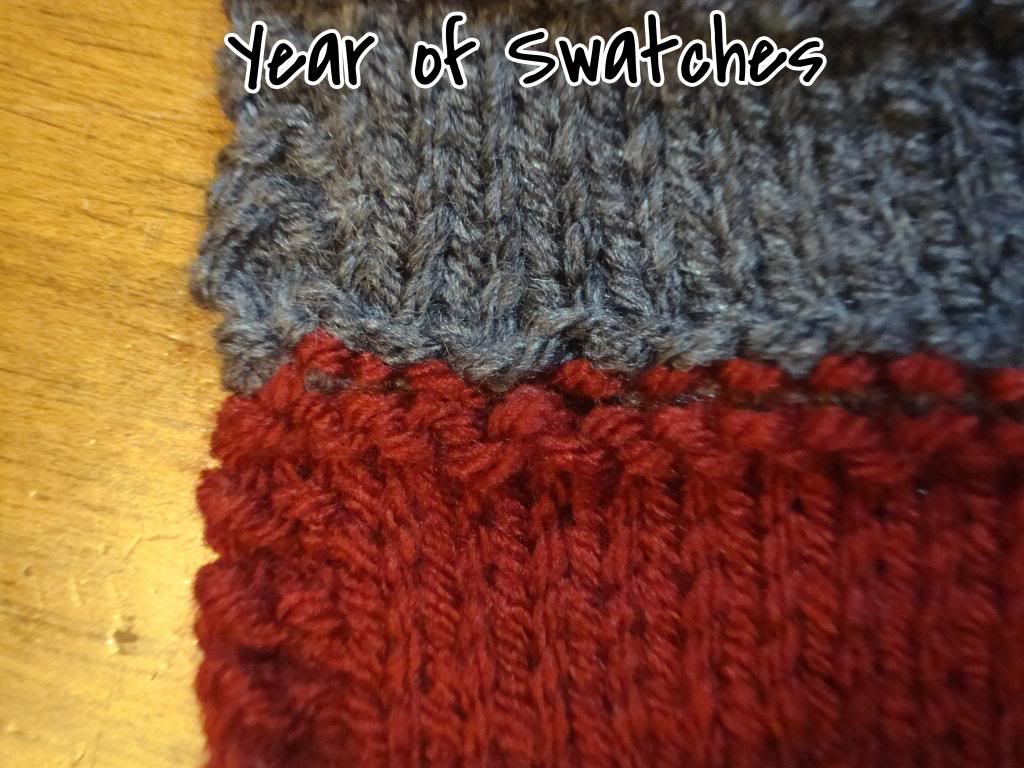Hello Friends.
It has been quite a while since I've written. It seems that I've started this post a hundred times, but can't get past this point. We'll just say, life got busy and writing wasn't a priority.
I'd like 2014 to be different. Since the 'New Year' is a time for resolutions, here's mine: I resolve to write more often. I'd like to share more of the personal things I've been working on as well as a couple of new designs. I also have another series of knitted squares for this year- the set up will be a bit different from the squares in the past.
I hope you can forgive my silence over the last 9 (or so months) and that you would join me for renewed knitting in 2014, I would be honored!
A Year of Swatches
A year of swatching with By The Book Knitters... 12 Squares, 1 Blanket, Countless Memories
Welcome to our little bit of knitterly Heaven- I'm so glad you found your way here!
Our goal is to teach beginning knitters some tricks of the trade as well as to work enough swatches to have a finished afghan by the end of the year! Join along with us as we learn about patterns, cables, lace, and some other handy techniques! A new pattern will become available each month ranging from newbie to adventurous. So stop on by, pick your pattern and knit along with us!
All patterns can be found here as well as on Ravelry.com!
Our goal is to teach beginning knitters some tricks of the trade as well as to work enough swatches to have a finished afghan by the end of the year! Join along with us as we learn about patterns, cables, lace, and some other handy techniques! A new pattern will become available each month ranging from newbie to adventurous. So stop on by, pick your pattern and knit along with us!
All patterns can be found here as well as on Ravelry.com!
Thursday, January 9, 2014
Friday, February 8, 2013
Fragments Clue 18- Blocking
Hiya Knitters! How did the grafting go? How awesome is this baby!
Today we are going to talk about blocking your scarf. The particular method we'll be using today is called wet-blocking. Blocking is essential when it comes to knitting, because it takes your knitting from just "being done" to looking complete. Always wonder how those patterns on Ravelry look so amazing? It's all to do with blocking (that and professional lighting and photography). And as far as techniques go, this is pretty darn easy (although a bit time consuming).
TOOLS:
-Lots of Quilting pins (I used about 120 for mine)
-A clean sink and cool fresh water
-A couple of clean, dry bath towels
-A place to pin where your knitting can be left undisturbed for up to 24 hours (more on this below)
-Optional: A helper- if you have (and can trust) one with the work. I've taught my husband how to pin, so I usually enlist his help on some of my larger projects.
GIVE IT A SOAK
After you've sewn in all your yarn ends, fill a clean sink or tub with some cool fresh water. Temperature is important! Especially if you are working with wool. If your water is too warm or hot, you can end up felting your work- and that would be horrible after all that hard work! Two things cause felting: warm water and agitation. And in its wet state, yarn is incredibly delicate.
Set your scarf in to soak. Do not agitate or wring your scarf (again, delicate). Let your scarf soak for about 30 minutes so you can be sure that the yarn is fully saturated. You can gently move your scarf a bit to make sure that there aren't any air pockets.
PRESS IT OUT
After the 30 minutes is up, drain the water and gently press the scarf against the side of your sink/tub to remove the excess water. Lay your bath towel(s) flat and place the scarf on top of it (my scarf was so long that I needed two towels slightly overlapping). Go ahead and stretch out your scarf as you would like it to look like when finished.
Roll up in the towel with the scarf inside.
Now you can get a little rough (still no wringing though)... using your body weight press on the towel to remove the rest of the water (I do this by walking up and down on the towel). The towel along with the pressure will wick the water out of your scarf. When you unroll your scarf, if it is still excessively wet, you can repeat the process with another dry towel.
Now that your scarf is more or less dry (it will feel damp to the touch), you can start pinning it out. You'll need a surface to pin your work on in a place that won't be disturbed for at least 24 hours. A foam mat, a spare mattress, and even a carpeted floor work just fine. I usually pin my knitting right onto the carpet in my closet or spare room where I can shut the door and let the piece dry in peace (haha).
This is the time to stretch and form your knitting to look exactly like you want it. Smooth any wrinkles and make the knitting taut, then pin it in place. I like to start in the middle and work my way to each end setting the pins about an inch or so apart. You can get pretty aggressive with your stretching at this point. This process will really make your stitch definition pop! And don't worry if you find yourself needing to re-pin sections as you go.
Make sure your edges are as straight as possible and that you get that lace to wave at the ends.
Once you are pleased with the pinning, allow your piece to air dry until it is completely dry. Dry time will vary depending on how wet your piece was when you started pinning.
I will post a final round of pictures as well as a short survey about the scarf either later today or tomorrow. Here's a head's up on the survey... I'd like you to let me know what your four favorite fragments are. The top four will end up being swatches for this year.
Well, I hope you had fun with this- I certainly did! I am so honored that you chose to knit-a-long with me and I hope you enjoy your Fragments Scarf!
Happy Knitting!
Today we are going to talk about blocking your scarf. The particular method we'll be using today is called wet-blocking. Blocking is essential when it comes to knitting, because it takes your knitting from just "being done" to looking complete. Always wonder how those patterns on Ravelry look so amazing? It's all to do with blocking (
TOOLS:
-Lots of Quilting pins (I used about 120 for mine)
-A clean sink and cool fresh water
-A couple of clean, dry bath towels
-A place to pin where your knitting can be left undisturbed for up to 24 hours (more on this below)
-Optional: A helper- if you have (and can trust) one with the work. I've taught my husband how to pin, so I usually enlist his help on some of my larger projects.
GIVE IT A SOAK
After you've sewn in all your yarn ends, fill a clean sink or tub with some cool fresh water. Temperature is important! Especially if you are working with wool. If your water is too warm or hot, you can end up felting your work- and that would be horrible after all that hard work! Two things cause felting: warm water and agitation. And in its wet state, yarn is incredibly delicate.
Set your scarf in to soak. Do not agitate or wring your scarf (again, delicate). Let your scarf soak for about 30 minutes so you can be sure that the yarn is fully saturated. You can gently move your scarf a bit to make sure that there aren't any air pockets.
PRESS IT OUT
After the 30 minutes is up, drain the water and gently press the scarf against the side of your sink/tub to remove the excess water. Lay your bath towel(s) flat and place the scarf on top of it (my scarf was so long that I needed two towels slightly overlapping). Go ahead and stretch out your scarf as you would like it to look like when finished.
Roll up in the towel with the scarf inside.
Now you can get a little rough (still no wringing though)... using your body weight press on the towel to remove the rest of the water (I do this by walking up and down on the towel). The towel along with the pressure will wick the water out of your scarf. When you unroll your scarf, if it is still excessively wet, you can repeat the process with another dry towel.
Now that your scarf is more or less dry (it will feel damp to the touch), you can start pinning it out. You'll need a surface to pin your work on in a place that won't be disturbed for at least 24 hours. A foam mat, a spare mattress, and even a carpeted floor work just fine. I usually pin my knitting right onto the carpet in my closet or spare room where I can shut the door and let the piece dry in peace (haha).
This is the time to stretch and form your knitting to look exactly like you want it. Smooth any wrinkles and make the knitting taut, then pin it in place. I like to start in the middle and work my way to each end setting the pins about an inch or so apart. You can get pretty aggressive with your stretching at this point. This process will really make your stitch definition pop! And don't worry if you find yourself needing to re-pin sections as you go.
Make sure your edges are as straight as possible and that you get that lace to wave at the ends.
Once you are pleased with the pinning, allow your piece to air dry until it is completely dry. Dry time will vary depending on how wet your piece was when you started pinning.
I will post a final round of pictures as well as a short survey about the scarf either later today or tomorrow. Here's a head's up on the survey... I'd like you to let me know what your four favorite fragments are. The top four will end up being swatches for this year.
Well, I hope you had fun with this- I certainly did! I am so honored that you chose to knit-a-long with me and I hope you enjoy your Fragments Scarf!
Happy Knitting!
PS- Kitties are cute, but they aren't very good at pinning!
Thursday, February 7, 2013
Fragments Clue 17- Grafting
Hi Friends! We've made it! Can you believe nearly a month ago, we started this journey together? I am so glad that you joined me to knit along!
Today is the first of our two finishing clues. We will start by grafting the two pieces together using a technique called Kitchener stitch.
Today is the first of our two finishing clues. We will start by grafting the two pieces together using a technique called Kitchener stitch.
Grafting is a handy task to learn because it allows you to
join two pieces of work, seamlessly, while the stitches are still "live’’ rather
than after they have been bound off.
Grafting can be done either with stockinette or garter stitches and the
technique is different for both. The
tutorial I like to use can be found here. The illustrations in this article are for stockinette stitch, and since we are going to be
grafting in garter stitch, I have made a photo
tutorial for you to follow.
If you are grafting for the first time, or need a refresher,
PLEASE do this during a quiet moment when you will be most likely to finish it
in one sitting without interruption (the process shouldn’t take you any longer than 30 minutes if it’s your first time). The
worst thing would be for you to set it down and not remember where you are when
you pick it back up. The first couple of
stitches in this grafting sequence will seem a little strange at first, but
there is a rhythm to it that you’ll soon pick up.
I’ve done both a photo tutorial as well as an abbreviated written version to
follow. When I graft, I like to look at
the pictures first to orient myself, but find that the words carry me through once
I’ve started.
For this project, and really any time you’re grafting, you
want your graft to match the tension of your knitting. It’s kinda like Goldilocks, you don’t want it
too loose nor too tight, but just right.
I’ve found that if your grafting is too loose it is way easier to fix
than if it is too tight, however the best option would to get it to be as close as possible. How do you
achieve this? Look at your knitting as
you go. Grafting is seamless , so your
graft should look exactly like your knitting. You don’t want the graft to pucker in (too
tight) or out (too loose) so keep an eye out.
I recommend pulling the stitches through until they meet, but not so
they are snug.
After you graft the piece together, there will be another
post on how to block your work as well as some follow up info. Take your time and enjoy the process!
THINGS YOU'LL NEED
Take the tail of yarn from the second half of your scarf and cut a length at least three times the length of your knitting (3-4 feet of yarn should do).
THINGS YOU'LL NEED
Take the tail of yarn from the second half of your scarf and cut a length at least three times the length of your knitting (3-4 feet of yarn should do).
A darning needle or other large eyed needle. The same as you’d use
for sewing in ends.
PREPARE FOR THE GRAFTING!
Thread stitches from stitch holder onto your spare needle
with the working yarn facing in- toward the inside of the needle (yup- opposite of what you'd normally do). This will be your back needle.
Thread your darning needle with tail of the front needle.
Hold the two halves of your scarf wrong sides together with the tips of the needles pointing to the right.
Insert the darning needle into the first stitch on the front needle
as if to purl and thread the yarn through.
Then, insert the needle into the first stitch of the back needle as if to
purl and pull the yarn through. Make the
stitches snug but NOT tight. Take care not to ‘’create’’ extra loops by looping
the yarn over the needles.
KITCHENER STITCH:
1- FRONT NEEDLE: Insert the needle into the first stitch on
the front needle as if to knit and slip that stitch off the needle.
2- FRONT NEEDLE: Insert the needle into the next stitch on
the front needle as if to purl, pull the yarn through but leave the stitch on
the needle.
3- BACK NEEDLE: Insert the needle into the first stitch on
the back needle as if to knit and slip that stitch off the needle.
4- BACK NEEDLE: Insert the needle into the next stitch on
the back needle as if to purl, pull the yarn through but leave the stitch on
the needle.
Repeat these four steps until you come to the final stitch
on each needle. Thread the needle
through the front stitch as if to knit and slip it off the needle. Then thread the needle through the stitch on
the back needle as if to knit and slip it off the needle.
To correct a graft that is too tight:
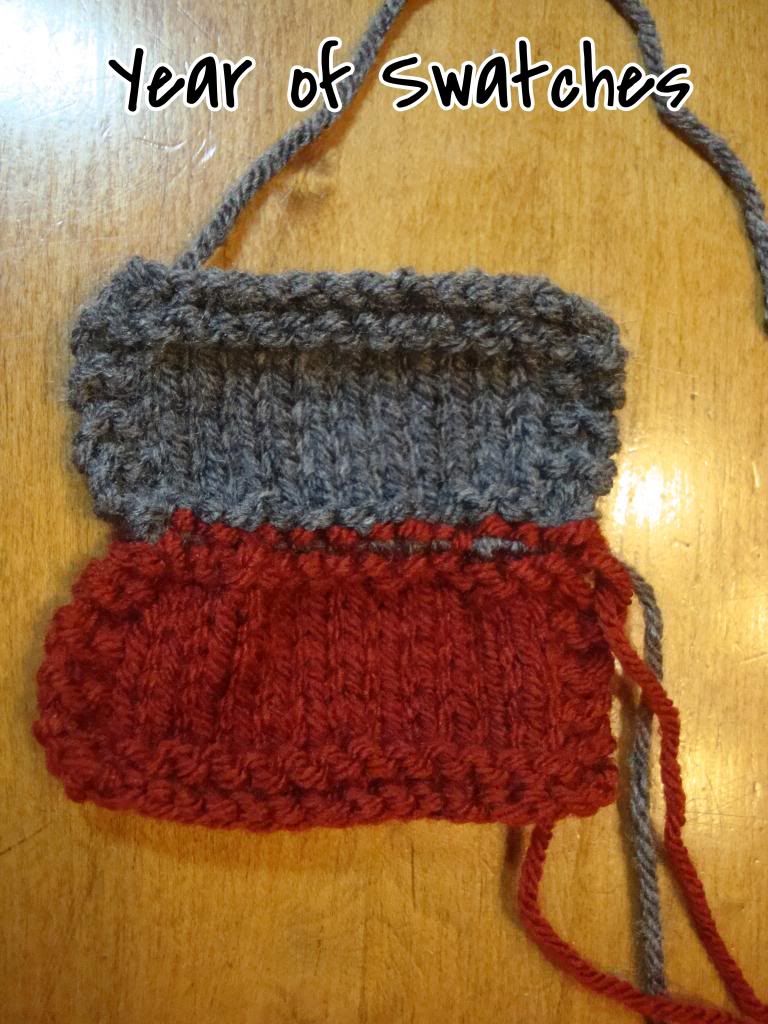 |
| Tug the two sides of your knitting away from each other. |
To correct a graft that is too loose:
 |
| Tug the end of your sewing yarn to tighten. |
You can manipulate that thread until your sewing looks
right.
Sew in all ends.
Abbreviated Instructions:
1.
FRONT NEEDLE: Knit and slip off the needle
2.
FRONT NEEDLE: Purl
and leave on the needle
3.
BACK NEEDLE: Knit and
slip off the needle
4.
BACK NEEDLE: Purl and
leave on the needle
I hope your grafting goes well. See you tomorrow for blocking!
Wednesday, February 6, 2013
Fragments Clue 16
Hi there and welcome to the Final Knitting Clue for our Fragments KAL! This last 'fragment' is really kinda cute and one of my favorites! Enjoy!
Pattern Notes:
This pattern is knit over 47 stitches- don't count your stitches after rows 5 or 11 (they won't add up!)
[K1, P1, K1, P1 all into the same stitch] This is an increase (making four stitches out of one) and is knit just like it sounds. Knit, purl, knit, and purl into the stitch without slipping it off the needle. This is knit the same way we did our little flame stitch from last week (you can also take a look at the bobble tutorial I posted a couple of years ago). Take a deep breath- you can do it!
[sl-3, K1, pss3o]- Slip 3 stitches to the right hand needle. Bring the yarn between the needles towards the back as if to knit, K1. Move yarn back between the needles to the front as if to purl and pass each slipped stitch over the knitted stitch and off the needle (keep the knitted stitch on the needle)
Row 1: Knit across row
Row 2: K3 *purl across* K3
Row 3: Knit across row
Row 4: K3 *purl across* K3
Row 5: K8 *[K1, P1, K1, P1 into the next stitch], K5* K3
Row 6: K3, P5 *[sl-3, K1, pss3o], P5* K3
Row 7: Knit across row
Row 8: K3 *purl across* K3
Row 9: Knit across row
Row 10: K3 *purl across* K3
Row 11: K5 *[K1, P1, K1, P1 into the next stitch], K5* to last 6 sts [K1, P1, K1, P1 into next stitch], K5
Row 12: K3, P2 *[sl-3, K1, pss3o], P5* to last 9 sts [sl-3, K1, pss3o], P2, K3
Knit through the pattern rows completely and then repeat rows 1-9 again (21 rows).
Knit 1 row.
Congrats! The knitting portion of our KAL is complete- now we just need to put it all together!
Tomorrow there will be a long winded post on how to join the two halves together and Friday will have a post on how to block your scarf.
Happy Knitting!
Pattern Notes:
This pattern is knit over 47 stitches- don't count your stitches after rows 5 or 11 (they won't add up!)
[K1, P1, K1, P1 all into the same stitch] This is an increase (making four stitches out of one) and is knit just like it sounds. Knit, purl, knit, and purl into the stitch without slipping it off the needle. This is knit the same way we did our little flame stitch from last week (you can also take a look at the bobble tutorial I posted a couple of years ago). Take a deep breath- you can do it!
[sl-3, K1, pss3o]- Slip 3 stitches to the right hand needle. Bring the yarn between the needles towards the back as if to knit, K1. Move yarn back between the needles to the front as if to purl and pass each slipped stitch over the knitted stitch and off the needle (keep the knitted stitch on the needle)
Row 1: Knit across row
Row 2: K3 *purl across* K3
Row 3: Knit across row
Row 4: K3 *purl across* K3
Row 5: K8 *[K1, P1, K1, P1 into the next stitch], K5* K3
Row 6: K3, P5 *[sl-3, K1, pss3o], P5* K3
Row 7: Knit across row
Row 8: K3 *purl across* K3
Row 9: Knit across row
Row 10: K3 *purl across* K3
Row 11: K5 *[K1, P1, K1, P1 into the next stitch], K5* to last 6 sts [K1, P1, K1, P1 into next stitch], K5
Row 12: K3, P2 *[sl-3, K1, pss3o], P5* to last 9 sts [sl-3, K1, pss3o], P2, K3
Knit through the pattern rows completely and then repeat rows 1-9 again (21 rows).
Knit 1 row.
Congrats! The knitting portion of our KAL is complete- now we just need to put it all together!
Tomorrow there will be a long winded post on how to join the two halves together and Friday will have a post on how to block your scarf.
Happy Knitting!
Tuesday, February 5, 2013
Fragments Clue 15
Hey Knitters!
Today's clue is relatively easy compared to the last couple of ones, but keep an eye open- there's lots of knits and purls!
Row 1: K3, P1 *K1, P1, K2, P1, K2, P1, K1, P1* K3
Row 2: K4* P2, K1, P1, K1, P1, K1, P2, K1 *K3
Row 3: K3, P1 *K3, P3, K3, P1* K3
Row 4: K5 *P3, K1, P3, K3* repeat to the last 12sts P3, K1, P3, K5
Repeat these rows for a total of 5 times, then repeat rows 1-3 again.
Knit 3 rows.
See you tomorrow and Happy Knitting!
Today's clue is relatively easy compared to the last couple of ones, but keep an eye open- there's lots of knits and purls!
Row 1: K3, P1 *K1, P1, K2, P1, K2, P1, K1, P1* K3
Row 2: K4* P2, K1, P1, K1, P1, K1, P2, K1 *K3
Row 3: K3, P1 *K3, P3, K3, P1* K3
Row 4: K5 *P3, K1, P3, K3* repeat to the last 12sts P3, K1, P3, K5
Repeat these rows for a total of 5 times, then repeat rows 1-3 again.
Knit 3 rows.
See you tomorrow and Happy Knitting!
Monday, February 4, 2013
Fragments Clue 14
Hi Friends- how was your weekend? More importantly, how is the knitting? I hope everything has gone well!
We are now in our final week of our KAL- wow has it has gone fast or what!
Pattern Notes:
sl-3 wyf: Move the yarn forward between the needles and slip the next 3 stitches to the right hand needle, move the yarn back and continue in pattern. This will occur on the right-hand (front) side of your work.
sl-3 wyb: Move the yarn between the needles to the back side of your work and slip the next 3 stitches to the right hand needle, move the yarn forward again and continue in pattern. This will occur on the wrong-hand (back) side of your work.
Row 1: K4 *K1, sl-3 wyf, K4* K4
Row 2: K4 *P4, sl-3 wyb, P1* K4
Row 3: K4 *K1, sl-3 wyf, K4* K4
Row 4: K4 *purl* K4
Row 5: K4 *K5, sl-3 wyf* K4
Row 6: K4 *sl-3 wyb, P5* K4
Row 7: K4 *K5, sl-3 wyf* K4
Row 8: K4 *purl* K4
Repeat these eight rows twice and then rows 1-7 again.
Knit 3 Rows.
During the final row k2tog once to prepare for the final row (47sts).
See ya tomorrow and Happy Knitting!
We are now in our final week of our KAL- wow has it has gone fast or what!
Pattern Notes:
sl-3 wyf: Move the yarn forward between the needles and slip the next 3 stitches to the right hand needle, move the yarn back and continue in pattern. This will occur on the right-hand (front) side of your work.
sl-3 wyb: Move the yarn between the needles to the back side of your work and slip the next 3 stitches to the right hand needle, move the yarn forward again and continue in pattern. This will occur on the wrong-hand (back) side of your work.
Row 1: K4 *K1, sl-3 wyf, K4* K4
Row 2: K4 *P4, sl-3 wyb, P1* K4
Row 3: K4 *K1, sl-3 wyf, K4* K4
Row 4: K4 *purl* K4
Row 5: K4 *K5, sl-3 wyf* K4
Row 6: K4 *sl-3 wyb, P5* K4
Row 7: K4 *K5, sl-3 wyf* K4
Row 8: K4 *purl* K4
Repeat these eight rows twice and then rows 1-7 again.
Knit 3 Rows.
During the final row k2tog once to prepare for the final row (47sts).
See ya tomorrow and Happy Knitting!
Friday, February 1, 2013
Subscribe to:
Posts (Atom)
